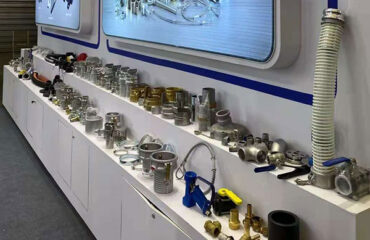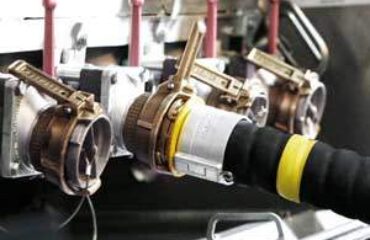The oil and gas industry demands robust, efficient, and secure fluid transfer solutions to handle hazardous and high-pressure applications. Among the most widely used connectors in this sector are **Camlock couplings** (also known as **cam and groove couplings**). These quick-connect fittings offer speed, versatility, and reliability, making them indispensable in upstream, midstream, and downstream operations.
What Are Camlock Couplings?
Camlock couplings consist of two main parts:
– Male adapter (plug) – Features a grooved end.
– Female coupler (socket) – Equipped with cam arms that lock onto the male adapter.
By simply aligning and pushing the male end into the female coupler, then rotating the cam arms to lock, a secure, leak-proof connection is formed—without the need for tools or threading.
Key Applications in Oil & Gas
1. Upstream Operations (Exploration & Production)
– Drilling Fluids Transfer: Camlock couplings facilitate the quick connection of hoses for mud circulation systems.
– Crude Oil Transfer: Used in temporary piping setups for transferring crude from wells to storage tanks.
2. Midstream Operations (Transportation & Storage)
– Pipeline Pigging: Camlocks allow fast hose connections for cleaning and inspection operations.
– Truck Loading/Unloading: Ensures rapid and secure connections for transferring fuel, LNG, or chemicals.
3. Downstream Operations (Refining & Distribution)
– Refinery Processes: Used for transferring petroleum products, solvents, and additives.
– Fuel Dispensing: Enables efficient connections for tanker trucks and storage facilities.
Why Camlock Couplings Are Preferred in Oil & Gas
Speed & Efficiency – No threading or tools required, reducing downtime.
Versatility – Available in various materials (stainless steel, aluminum, polypropylene) to handle different fluids.
Safety – Secure locking mechanism prevents accidental disconnections.
High-Pressure & Temperature Resistance – Suitable for demanding oilfield conditions.
Leak Prevention – Properly sealed connections minimize spill risks.
Material Considerations
– Stainless Steel (SS316) – Ideal for corrosive environments (e.g., offshore rigs, chemical transfers).
– Aluminum – Lightweight yet durable for fuel and oil applications.
– Polypropylene/Nylon – Used for acids, water, and non-corrosive fluids.
Best Practices for Using Camlock Couplings
– Inspect Regularly – Check for wear, corrosion, or damaged seals.
– Match Correct Types – Ensure compatibility between male/female ends (e.g., Type A to Type A).
– Use Safety Clips – Prevents accidental unlocking in high-vibration areas.
– Follow Industry Standards – Comply with API, OSHA, and other regulations.
Camlock couplings are a cornerstone of fluid transfer systems in the oil and gas industry, offering unmatched speed, safety, and reliability. Whether in drilling, refining, or transportation, their efficiency helps streamline operations while reducing risks.
For optimal performance, always select the right material and type for your application and adhere to maintenance best practices.



